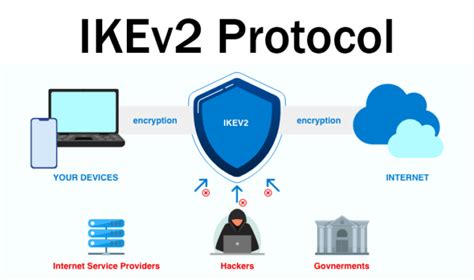5 IDS IPS Tools
Intrusion Detection Systems (IDS) and Intrusion Prevention Systems (IPS) are crucial components of network security, designed to monitor and control network traffic for signs of unauthorized access or malicious activities. While IDS focuses on detection and alerting, IPS goes a step further by actively preventing or blocking malicious traffic. Here’s an overview of five significant IDS/IPS tools, highlighting their features, functionalities, and the unique value they bring to cybersecurity:
1. Snort
Snort is one of the most widely used IDS/IPS tools, known for its open-source availability and robust feature set. It can perform real-time traffic analysis and packet logging on IP networks. Snort can be configured in three main modes: sniffer, packet logger, and network intrusions detection. Its ability to detect and prevent intrusions in real-time, combined with its customizable ruleset, makes Snort a powerful tool for network security.
2. Suricata
Suricata is another open-source IDS/IPS system that offers high-performance and a robust set of features. It’s known for its multi-threading capabilities, allowing it to handle high-speed networks with ease. Suricata supports various output formats, making it easy to integrate with other security tools and platforms. Its rule-based detection engine, along with its ability to inspect files, makes Suricata a preferred choice for many security professionals.
3. OSSEC
OSSEC is a host-based IDS that focuses on log analysis, file integrity monitoring, and rootkit detection. What makes OSSEC unique is its multi-platform support, allowing it to run on most operating systems, including Windows, Linux, and Unix variants. It can alert on potential security incidents and provide detailed analysis and reporting. OSSEC’s ability to monitor system logs for suspicious activity and its scalability features make it a solid choice for organizations seeking to enhance their endpoint security.
4. Zeek (formerly Bro)
Zeek, formerly known as Bro, is a powerful network security monitor that offers a different approach to IDS by providing a comprehensive framework for analyzing network traffic. It’s designed to sit on a network tap, mirror port, or other traffic source and produce a wealth of information about the network’s activity. Zeek’s flexibility and customizability, through its scripting language, allow security teams to craft detailed analyses of network behavior, making it invaluable for understanding and securing complex network environments.
5. Cisco Stealthwatch
Cisco Stealthwatch is a commercial IDS/IPS solution that operates through network traffic analysis to detect and respond to threats in real-time. It leverages machine learning and analytics to identify anomalous activity and potential threats. Stealthwatch can scale to support large and distributed networks, providing detailed visibility into network traffic. Its integration with Cisco’s ecosystem and support for Encrypted Traffic Analytics make it a go-to solution for enterprises seeking robust network security capabilities.
Choosing the Right IDS/IPS Tool
The selection of an IDS/IPS tool depends on various factors, including the organization’s specific security needs, the complexity of its network, the existing security infrastructure, and the skill set of its security team. Open-source solutions like Snort and Suricata offer cost-effectiveness and customization, while commercial solutions like Cisco Stealthwatch provide seamless integration with existing network infrastructure and comprehensive support. Understanding the capabilities, strengths, and limitations of each tool is essential for making an informed decision.
Implementation Considerations
- Network Architecture: Ensure the IDS/IPS can monitor all necessary segments of the network effectively.
- False Positives: Implement measures to minimize false positives, such as fine-tuning rules and engaging in regular system updates.
- Scalability: Choose a system that can scale with your network’s growth.
- Integration: Consider how well the tool integrates with your existing security information and event management (SIEM) systems.
- Resources and Expertise: Ensure that your team has the necessary resources and expertise to properly configure and manage the IDS/IPS system.
Implementing an effective IDS/IPS system requires careful planning, ongoing management, and continuous monitoring to ensure it remains effective against evolving threats. By selecting the right tool and configurations based on the specific needs and constraints of the organization, security teams can significantly enhance their network’s defenses against malicious activities.
What is the main difference between IDS and IPS systems?
+The primary difference is that IDS (Intrusion Detection System) monitors network traffic for signs of unauthorized access or malicious activity and sends alerts to the security team, whereas IPS (Intrusion Prevention System) not only detects but also prevents the intrusion by blocking the malicious traffic in real-time.
Why is it important to choose the right IDS/IPS tool for an organization?
+Choosing the right IDS/IPS tool is crucial as it depends on the organization’s specific security needs, network complexity, existing infrastructure, and the skill set of the security team. The right tool ensures optimal protection, efficient use of resources, and scalability with the organization’s growth.
How do open-source IDS/IPS solutions compare to commercial ones?
+Open-source solutions like Snort and Suricata offer cost-effectiveness, customizability, and a community-driven development process, which can be highly advantageous for organizations with specific needs or limited budgets. Commercial solutions, such as Cisco Stealthwatch, provide comprehensive support, seamless integration with existing infrastructure, and often more advanced features, making them preferable for large enterprises or those seeking robust, out-of-the-box solutions.


